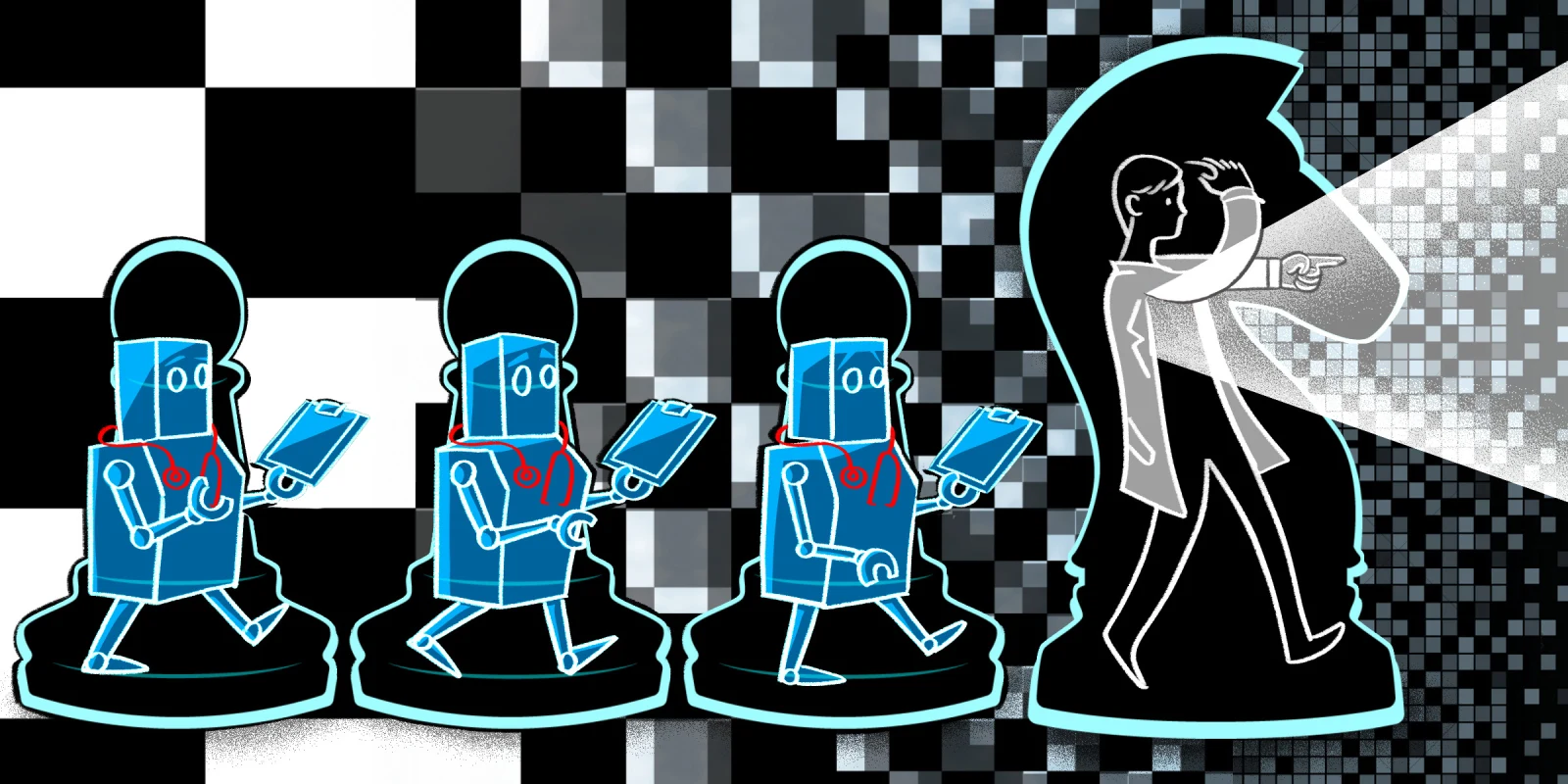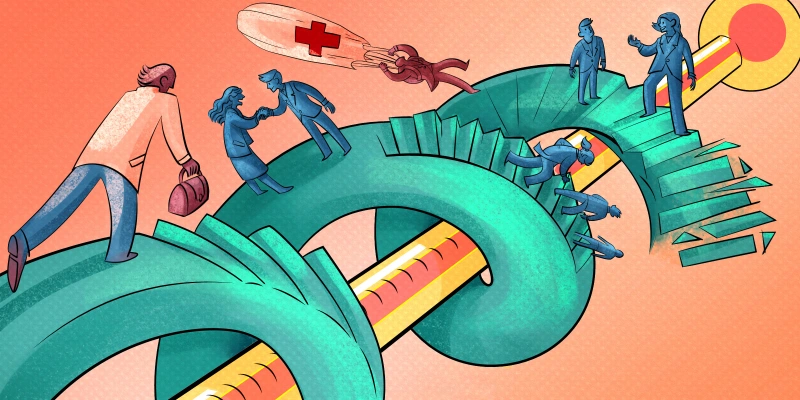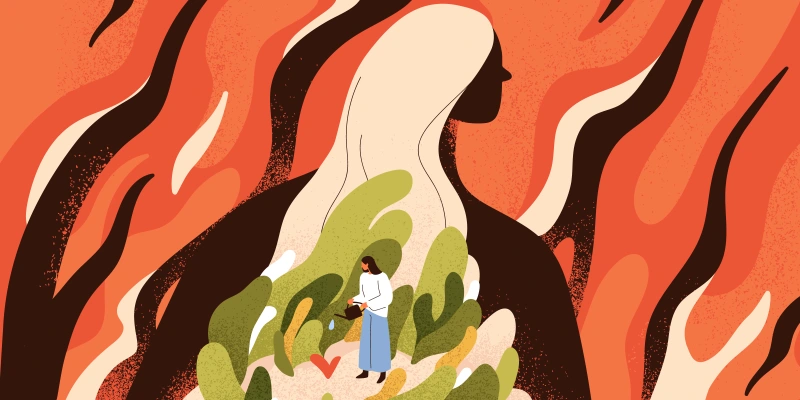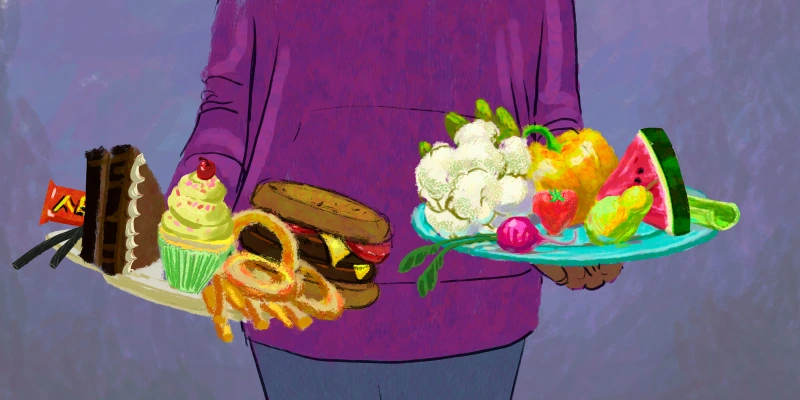I'll always remember the year 2025 as the one where I began to wonder if I had been replaced by a robot. I was struggling to edit a scientific manuscript, so I thought I would give a large language model (LLM) a try. A robot spit out an edited draft in a fraction of a second. The same output would have taken me several drafts. A robot was doing my work as a physician-scientist better than me.
Despite this unsettling feeling, AI finds its way into my workflow. It provides patient summaries in our EHR. Some LLMs run encompassing literature searches in minutes with just a few taps on the keyboard. AI helps physicians write letters of recommendations, fine-tune emails in a professional tone, create letters of appeal to insurance companies, and edit manuscripts. Many physicians applaud AI's positive effect on productivity. Physician use of AI is a popular subject at academic institutions and conferences. But some physicians hold a critical view that AI cannot and should not replace the human aspect of medicine. After all, communication should be human work rather than governed by LLMs. And when it comes to patient care, doesn't AI have limitations?
The truth is, while AI assists with physician productivity, AI cannot achieve the same level of creativity and idea generation as compared to a human with emotions shaped by patient experiences and an evolving relationship with science. It's this emotional aspect that informs our perspective as patient advocates, mentors, and researchers. The emotions manifest as a spark for an idea about a grant proposal, a scientific study, or a new clinical program.
This emotion often comes from witnessing patients suffering, something an algorithm cannot experience. For example, I have an interest in patients with sickle cell disease and chronically low oxygen levels that lead to prolonged hospitalization. Parents of these children have pressed me for answers, have begged me to "Please help my child." These experiences led me to develop a clinical initiative to use non-invasive ventilation for this condition, which led to a research study. This example illustrates that physician desire to improve patient outcomes comes from an emotion, followed by an idea for change. AI can't experience this, and in fact, its ability to express empathy is entirely in an algorithmic fashion. This algorithm can have dire consequences as illustrated by a teen who committed suicide on the advice of a chatbot. This story highlights flaws in the system despite evidence that AI is more empathetic than physicians in written communication. The reality is that the longitudinal nature of the patient-physician relationship is complex, difficult to capture in a scientific study, and leads to creative ideas for solutions.
Meanwhile, the algorithm of AI discounts creativity entirely. Although AI may surpass physician diagnostic ability in some studies, physicians must understand that these studies don't assess real-time patient care and the methodology may be biased in favor of AI. Patient care is not algebraic or geometric. Rather, clinical and scientific decision-making is a creative endeavor. A creative physician is thoughtful, one who considers diagnostic workup, physical exams, progression over time, patient lifestyle, and social determinants. One clinical solution for one patient does not work for another.
In fact, searching for creative clinical solutions keeps us awake in the middle of the night. We ask ourselves, Is there some other way to help my patient? This is not a question a robot asks. AI may be able to provide options for solutions, but can be highly flawed. AI algorithms are known to produce erroneous and biased output or "hallucinations." Moreover, AI output is well-known to be predictably robotic and formulaic. Medicine has always been, and always will be, an art form with nuance, and this is why AI guided by creative human expression is the ideal solution to our AI-infused world.
Physicians can fine-tune creativity with intentional practice. We can do this with a journaling practice, which writers find to be fundamental to their creativity. Best-selling author Julia Cameron recommends both journaling and "artist's dates" in her book "The Artist's Way." These are dates with our "inner artist" to a museum, park, or a painting class. These practices allow space for self-reflection, to declutter our minds. I've found journaling to be an excellent way to brainstorm solutions to difficult problems, even patient situations. Intentionally connecting to our emotive and creative sides helps us translate life's messy three-dimensions littered with joy and suffering into surprising, creative decision-making.
Experts deem AI to be the most applicable in the health care setting, therefore we cannot underestimate how AI may be woven into the fabric of medicine. In five years, AI will likely have an even more substantial role in our daily work lives. However, physicians must remember that AI output is only as good as what we input, and our creativity should guide our input and our use of the output. As we continue to assimilate AI into our work lives, kindling physician creativity grounded in patient experience is the best way to advance medicine in a way a robot can never solely achieve.
Writer's note: This piece was entirely written without the use of AI.
Devika Rao is a practicing pediatric pulmonologist in Texas. She enjoys writing, trying new vegetarian recipes, yoga, and spending time with her two boys and husband. Dr. Rao was a 2024-2024 Doximity Op-Med Fellow.
Illustration by April Brust







